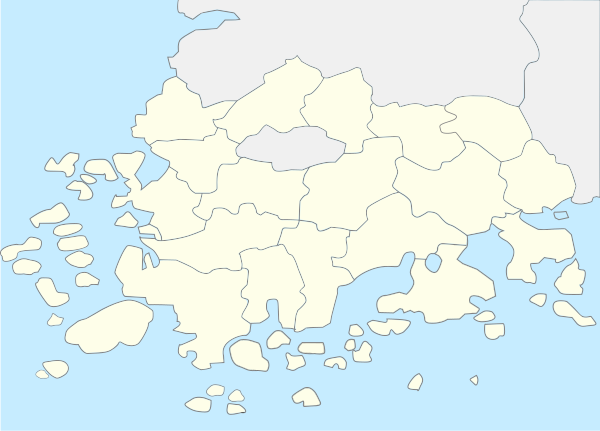Korea has had administrative districts that can be considered provinces since the 7th century. These divisions were initially called ju in Unified Silla and Later Baekje, and there were nine in total. After Goryeo conquered these states in the 10th century, twelve divisions called mok were established, although they were reorganized into ten do in the 11th century.

South Gyeongsang Province is a province in the southeast of South Korea. The provincial capital is at Changwon. It is adjacent to the major metropolitan center and port of Busan. The UNESCO World Heritage Site Haeinsa, a Buddhist temple that houses the Tripitaka Koreana and tourist attraction, is located in this province. Automobile and petrochemical factories are largely concentrated along the southern part of the province, extending from Ulsan through Busan, Changwon, and Jinju.
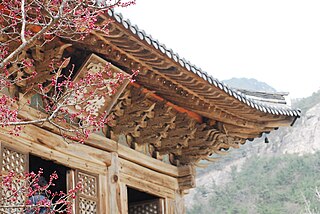
North Jeolla Province, officially Jeonbuk State, is a Special Self-governing Province of South Korea in the Honam region in the southwest of the Korean Peninsula. Jeonbuk borders the provinces of South Chungcheong to the north, North Gyeongsang and South Gyeongsang to the east and South Jeolla to the south.

South Jeolla Province, also known as Jeonnam (전남), is a province in the Honam region, South Korea, and the southernmost province in mainland Korea. South Jeolla borders the provinces of North Jeolla to the north, South Gyeongsang to the northeast, and Jeju to the southwest in the Korea Strait.
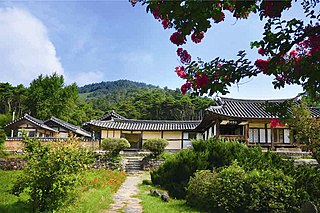
South Chungcheong Province, also known as Chungnam, is a province of South Korea in the Hoseo region in the southwest of the Korean Peninsula. South Chungcheong borders the provinces of Gyeonggi to the north, North Chungcheong, Sejong Special Self-governing City, and Daejeon Metropolitan City to the east, and North Jeolla to the south.

Iksan is a city and major railway junction in North Jeolla Province, South Korea.

Jeolla Province was one of the historical Eight Provinces of Korea during the Kingdom of Joseon in southwestern Korea. It consisted of the modern South Korean provinces of North Jeolla, South Jeolla and Gwangju Metropolitan City as well as Jeju Province. The provincial capital was Jeonju, the current capital of North Jeolla. The entire inland region was called Honam, which is still commonly used today.

Honam is a region coinciding with the former Jeolla Province in what is now South Korea. Today, the term refers to Gwangju, South Jeolla Province, Jeju Province and Jeonbuk State. The name "Jeonla-do" is used in the names of the Honam railway line and Honam Expressway, which are major transportation corridors connecting Seoul and Daejeon to the Honam region. The name is often used to refer to people residing in the region. There is also Honam University, which is located in Gwangju, the biggest city in Honam.

Gyeongsang Province was one of the Eight Provinces of Joseon Korea. Gyeongsang was located in southeastern Korea.

Chungcheong was one of the eight provinces of Korea during the Joseon Dynasty. Chungcheong was located in the southwest of Korea. The provincial capital was located at Gongju, which had been the capital of the kingdom of Baekje from 475 to 538.

During most of the Joseon dynasty, Korea was divided into eight provinces. The eight provinces' boundaries remained unchanged for about 480 years from 1413 to 1895, and formed a geographic paradigm that is still reflected today in the Korean Peninsula's administrative divisions, dialects, and regional distinctions. The names of all eight provinces are still preserved today, in one form or another. These eight historical provinces form both North and South Korea, and are not to be confused with the provinces that make up North Korea or South Korea.
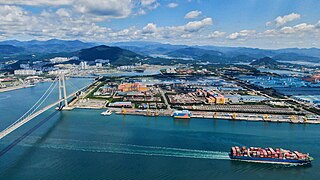
Gwangyang is a city in South Jeolla Province, South Korea. Gwangyang is the home of POSCO's Gwangyang Steel Works, the largest facility of its kind in the world. The city is also home to K League Classic football side Jeonnam Dragons.

Buan County is a county in Jeonbuk State, South Korea. It is bounded by the city of Jeongeup on the east, the county of Gochang on the south, the city of Gimje on the north, and Yellow Sea on the west. Buan is divided into 1 eup, 12 myeon, and 510 ri. Buan had a 2001 estimated population of 74,716 people and a 2018 population of 54,441 people with an area of 493.35 km2. Famous people from Buan include Joseon Dynasty kisaeng and poet, Yi Mae-chang. Like many rural areas in southern Korea, it has seen shrinking population with many younger people moving north to larger cities such as Seoul. This county should not be confused with Muan, the new capital of South Jeolla Province.

South Korea is made up of 22 first-tier administrative divisions: 6 metropolitan cities, 1 special city, 1 special self-governing city, and 14 provinces, including three special self-governing provinces and five claimed by the ROK government. These are further subdivided into a variety of smaller entities, including cities, counties, districts, towns, townships, neighborhoods and villages.
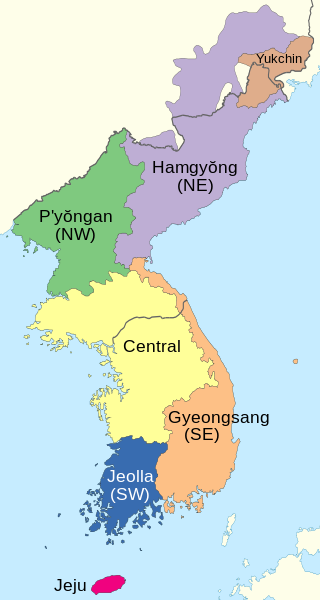
A number of Korean dialects are spoken on the Korean Peninsula. The peninsula is very mountainous and each dialect's "territory" corresponds closely to the natural boundaries between different geographical regions of Korea. Most of the dialects are named for one of the traditional Eight Provinces of Korea. Two are sufficiently distinct from the others to be considered separate languages, the Jeju and the Yukjin languages.
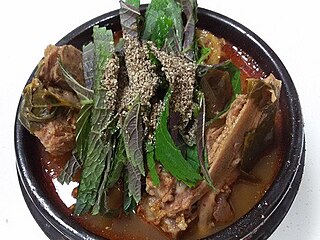
Gamja-tang (Korean: 감자탕) or pork back-bone stew is a spicy Korean soup made from the spine or neck bones of a pig. It often contains potatoes, cellophane noodles, greens, perilla leaves, green onions, hot peppers and ground perilla seeds.
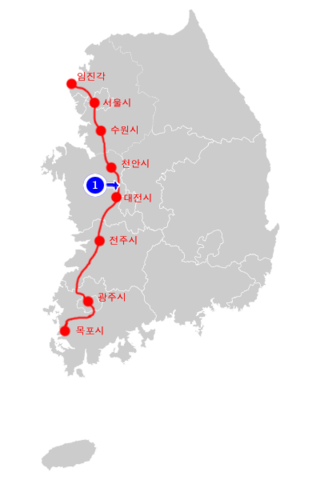
National Route 1(Korean: 국도 제1호선; RR: Gukdo Je Il Hoseon) is a national highway in South Korea. It connects Mokpo, South Jeolla Province with the city of Paju in Gyeonggi-do. Before the division of the Korean peninsula, the highway ran until Sinuiju, North P'yongan Province, in present-day North Korea.

The Chungcheong dialects of the Korean language are spoken in the Chungcheong (Hoseo) region of South Korea, including the metropolitan city of Daejeon. It may also include several areas in Gyeonggi Province, most notably Pyeongtaek, that are adjacent to Chungcheong Province. Chungcheong dialect can be divided into two categories: the Northern Chungcheong dialect, notable for its similarity to the Gyeonggi dialect, and the Southern dialect, which is similar to the Jeolla dialect. This dialect is notable for its slow enunciations, vowel changes, and unique jargon. However, as Seoul expands and standard language supremacy spreads, young people in Chungcheong Province, including Daejeon and Sejong, do not use original dialect, or use very little of it. Most young people use standard language and dialect alternately, and in cities located just below the Seoul metropolitan area (Sudogwon), like Cheonan, dialect is on the verge of extinction.
Hadang (Korean: 하당신도시) is the newly built urban area in Mokpo, South Jeolla Province, South Korea, which aims at accommodating increased population near Muan International Airport and movement of the provincial office. Before announcement of the transfer of office, Mokpo initially intended to rebuild another area for housing. The project was finalized so until 1999 most of area was leased for marketing, business, housing, and preliminary purpose.
